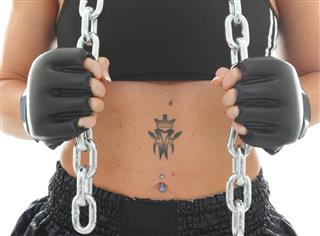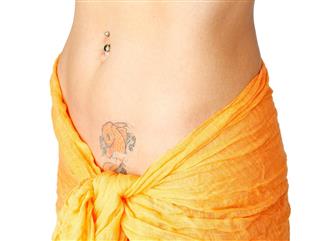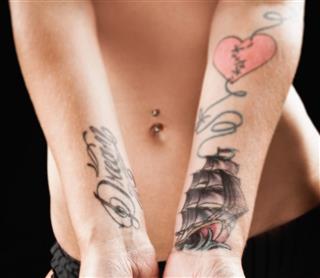
Are you thinking of getting your belly button pierced? This ThoughtfulTattoos article provides some information about navel piercing that will help you understand its associated dangers and risks.
People get their body pierced due to many reasons; some do it as per their culture, whereas others pierce their body for style. In recent times, tattooing and piercing have become very popular, especially among teens. For them, piercing is a cool and trendy fashion of body decoration. In fact, many of them are not aware of the potential risks of body piercings. When opting for the navel piercing, precautions should be followed to avoid severe health complications. Let’s take a look at some of the dangers and risks involved with belly button piercing.
Navel Piercing Dangers and Risks
The most common site for navel piercing is the upper rim of the tummy. The healing time is comparatively longer than other body piercings. It is due to the fact that recurrent bending, sitting, and other body postures disturb the pierced site. The pierced site is often complicated to heal due to sweating and irritations from clothing, especially the tight fitting ones. In general, piercing at the navel portion requires four months to one year to heal completely. Like any other body piercing, there are certain risks associated with this piercing, which are discussed as follows.
Infections
Infections, particularly a bacterial infection, are the most common problems related to this piercing. Though, the chances of navel piercing infections are more common with the use of unsterilized equipment, infections are also possible with the sterilized ones. An infected area swells and appears red, usually accompanied by a burning sensation and pain. If proper skin care of the infected area, like regular cleaning with saline water and antibacterial soap is not followed, then there is increased risk of recurrent infections.
Excessive Bleeding and Nerve Damage
Another common problem is excessive bleeding, which may occur due to damage of the blood vessels. In some cases, navel piercing can injure the nerves beneath the belly button, resulting in numbness of the area.
Allergic Reaction
Allergic reactions at the navel portion are caused due to the pierced jewelry. To avoid risks of jewelry allergies, one should opt for jewelry made of implant grade stainless steel, gold (8 karat), and titanium. Sliver jewelry are not recommended for the new piercings as there are risks of permanent skin darkening due to tarnish deposits from the silver metal.
Keloid
Keloid, a thick scarring at the pierced site, is another problem. This raised pinkish scar tissue at the site of an injury is developed when the scar tissues (from the pierced site) interfere with the normal healthy tissues.
Wrong Jewelry
Wrong jewelry, in terms of the metal type and size, often causes problems at the piercing site. If the jewelry is too small, it may cut the blood supply to the piercing area, resulting in swelling and pain. The same problem may occur in case of very thin and/or heavy jewelry.
Some people are of the opinion that piercing guns are a better option for navel piercing as they cause a little pain. In contrary to this, it is to be noted that body piercing should not be done by using piercing guns. Unlike regular needles, they cannot be sterilized, thereby increasing the chances of infection.
Belly button piercing should be done thoughtfully as it is quite painful and may create problems when sleeping. So, it is always better to talk with your parents and/or friends before getting your navel pierced. If possible, talk to people who have already done it so that you will get a brief idea about the pros and cons of navel piercing. If you really wish to flaunt belly button jewelry, then it is always advisable to get the piercing done by a licensed body piercer. Also, seek and follow proper aftercare instructions as suggested by a professional to avoid complications.
Disclaimer: This article is for informative purposes only and does not in any way attempt to replace the advice offered by an expert on the subject.





